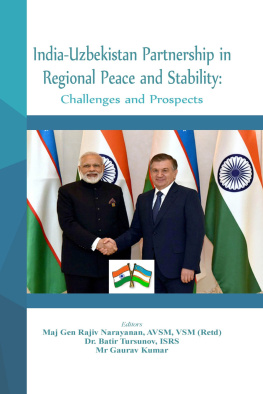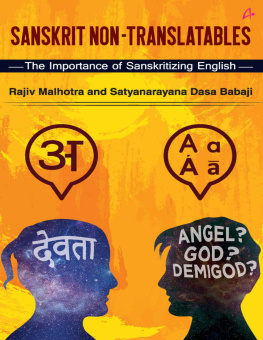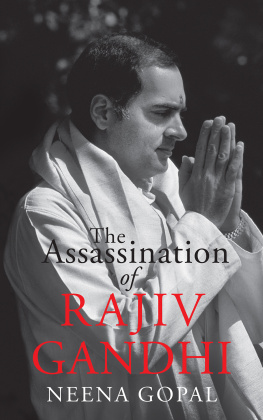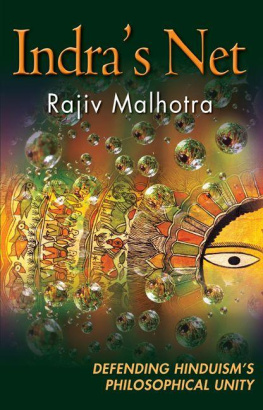Malhotra Rajiv - Snakes in the Ganga: Breaking India 2.0
Here you can read online Malhotra Rajiv - Snakes in the Ganga: Breaking India 2.0 full text of the book (entire story) in english for free. Download pdf and epub, get meaning, cover and reviews about this ebook. year: 2022, publisher: Infinity Foundation, genre: Politics. Description of the work, (preface) as well as reviews are available. Best literature library LitArk.com created for fans of good reading and offers a wide selection of genres:
Romance novel
Science fiction
Adventure
Detective
Science
History
Home and family
Prose
Art
Politics
Computer
Non-fiction
Religion
Business
Children
Humor
Choose a favorite category and find really read worthwhile books. Enjoy immersion in the world of imagination, feel the emotions of the characters or learn something new for yourself, make an fascinating discovery.

- Book:Snakes in the Ganga: Breaking India 2.0
- Author:
- Publisher:Infinity Foundation
- Genre:
- Year:2022
- Rating:4 / 5
- Favourites:Add to favourites
- Your mark:
- 80
- 1
- 2
- 3
- 4
- 5
Snakes in the Ganga: Breaking India 2.0: summary, description and annotation
We offer to read an annotation, description, summary or preface (depends on what the author of the book "Snakes in the Ganga: Breaking India 2.0" wrote himself). If you haven't found the necessary information about the book — write in the comments, we will try to find it.
Snakes in the Ganga: Breaking India 2.0 — read online for free the complete book (whole text) full work
Below is the text of the book, divided by pages. System saving the place of the last page read, allows you to conveniently read the book "Snakes in the Ganga: Breaking India 2.0" online for free, without having to search again every time where you left off. Put a bookmark, and you can go to the page where you finished reading at any time.
Font size:
Interval:
Bookmark:
SNAKES IN THE GANGA
Breaking India 2.0
Rajiv Malhotra
and
Vijaya Vishwanathan

Infinity Foundation
2022
Infinity Foundation 2022
Published in 2022 by
Infinity Foundation,
174 Nassau St.,
PMB 400,
Princeton,
NJ 08542
https://infinityfoundation.com/
All rights reserved under Indian Copyright Conventions. By payment of the required fees, you have been granted the nonexclusive, nontransferable right to access and read the text of this e-book on-screen. No part of this text may be reproduced, transmitted, downloaded, decompiled, reverse-engineered, or stored in or introduced into any information storage and retrieval system, in anyform or by any means, whether electronic or mechanical, now known or hereafter invented, without the express written permission of Infinity Foundation e-books.
e-Book
IFI050v1.0.0
Date: 17-09-2022
ISBN:
Created by: Sriranga Digital Software Technologies Private Limited
srirangadigital.com
R. Vaidyanathan
India is reeling under pressure from persistent attacks on its ancient culture and civilization. These attacks are well coordinated, funded, and orchestrated from international locations and use Indians to exploit fault lines in India, which being a democracy and an open society, are quite visible. The caste system, for example, is painted dark; however, because of all the propaganda denouncing it, very little is being explained about the structure of Indian society.
One solid attempt to present how the ancient caste system was distorted into a flawed system and is now being exploited by an international nexus was made a dozen years ago. That was a pioneering work and a bestselling book, Breaking India: Western Interventions in Dravidian and Dalit Fault Lines . It created a thought revolution, because for the first time, there was a high level of clarity. The term Breaking India forces along with an entire framework and vocabulary became part of this revolution. It explained, with evidence, the elaborate system working within and outside India to brainwash, manipulate, and evangelize the rural poor with the end goal of destroying the civilizational fabric. The social movement resulting in the aftermath of the work brought many hitherto unknown concepts into popular lexicon. It spurred a whole generation of social media icons in India, with their own spheres of influence in political and cultural discourse. This gave birth to innumerable legal, political, and social changes in the country at various levels.
But while there is growing recognition of what the earlier Breaking India forces are up to, there has been a qualitative change and expansion of threats from new Breaking India forces. As lead author of Breaking India , Rajiv Malhotra, along with his new co-author, Vijaya Viswanathan, analyze this situation in Snakes in the Ganga .
This book is even more important than Breaking India because todays Breaking India forces 2.0, as this book refers to them, are operating behind the scenes. They can only be understood upon careful and incisive investigation into their activities. Prestigious American universities like Harvard have been captured by them where they frame Social Justice theories designed to dismantle India. And Harvard has entered India and infiltrated its core institutions.
This book sheds light on the forces operating behind the social conflicts India has been facing recently while anticipating future attacks. Without this perspective on the global nexuses at work, Indian intellectuals are limited to reactive, rather than proactive, responses to the growing attacks on issues like Article 370, Citizenship (Amendment) Act, 2019, Babri Masjid, the farmers revolt, and more recently, the Nupur Sharma saga, and the Agneepath scheme.
Snakes in the Ganga provides a balanced view and connects the dots between Marxism and Critical Race Theory (CRT), popularly known as Wokeism. It explains how Critical Race Theory/Wokeism has become the latest framework for interpreting India. Most Indians are unaware that this framework is being used to microscopically examine caste, Muslim grievances, Kashmir, gender and LGBTQ+ issues, communal violence, and even domains like public health, education, clean water, environment, and foreign policy. This analysis then provides the foundation for condemning India and passing judgment on social matters that havent been understood adequately. This is the first book I am aware of that provides such a detailed analysis of this new force. It gives profound insights on the course of Critical Race Theory and other social theories developed by the far Left in the West. It describes the penetration and trajectory of this movement in India.
Many will be shocked to discover how Harvard is playing the lead role in building a troubling alliance between a few leading Black Americans and ambitious young Dalits, encouraging them to map Indias caste system on to the Western concept of race. Theories known as Critical Caste Theory and Critical Dalit Theory are built on this framework and taught at Harvard as established fact in their curriculum. Despite the bogus comparison, no counter position is either presented or even entertained at Harvard.
Breaking India had already exposed the devious plan to map Black Americans to Dalits and White Americans to Brahmins, although the movement was only in its initial phases at the time. Today, it can no longer be considered a fringe movement. The American TV host, Oprah Winfrey actively promotes it and books that discuss it have become New York Times bestsellers. Harvard scholars are vigorously involved in mirroring the entire Black movement to a corresponding Dalit movement. There is a Dalit Heritage Month similar to the Black Heritage Month. There is a Dalit Lives Matter movement mirroring the Black Lives Matter movement. Like the Black Panther party, there is now the Dalit Panthers organization, and so on.
Considering the speed with which American systems are imported into India, Indians should be concerned about the divisive caste surveys being conducted in the US tech sector (especially in Silicon Valley). The information thus generated is not intended to be used for a reconciliation between people, but to help construct legal cases accusing upper caste Indian employees in American organizations of being akin to White supremacists. The US legal concept of protected classes is being applied to people who could qualify as victim identities from India. Under the mask of philanthropy and development, they are being recruited and incentivized to produce information on India that could help Harvard build an archive and database for research that supports its pet theories and helps it generate atrocity literature. Such databases are also being used to train Artificial Intelligence algorithms to have an anti-India bias.
While America benefits from the enormous brain drain from India, Harvard academics have begun targeting Indian Science, Technology, Engineering, and Mathematics (STEM) institutions for their role in upholding meritocracy which Harvard scholars view as structures of Brahminical patriarchy. This is yet another way to break India by dismantling its institutions of excellence.
Because of Harvards sheer power, this movement has taken Indias divisive identity politics to a whole new level. Snakes in the Ganga draws parallels with the British civilizing mission in India, which served as a divide and rule policy to control Indians. Sanskrit continues to be denigrated as an oppressive language. Hinduism is a prime target worthy of being dismantled while Islam has assumed a victim identity. Additionally, the Indian family system has now been declared an oppressive structure that is perpetuating patriarchy and Brahmin privilege. Even gurus have not been spared. There is an obvious and concerted effort to completely dismantle the foundations of Indian civilization.
Next pageFont size:
Interval:
Bookmark:
Similar books «Snakes in the Ganga: Breaking India 2.0»
Look at similar books to Snakes in the Ganga: Breaking India 2.0. We have selected literature similar in name and meaning in the hope of providing readers with more options to find new, interesting, not yet read works.
Discussion, reviews of the book Snakes in the Ganga: Breaking India 2.0 and just readers' own opinions. Leave your comments, write what you think about the work, its meaning or the main characters. Specify what exactly you liked and what you didn't like, and why you think so.








